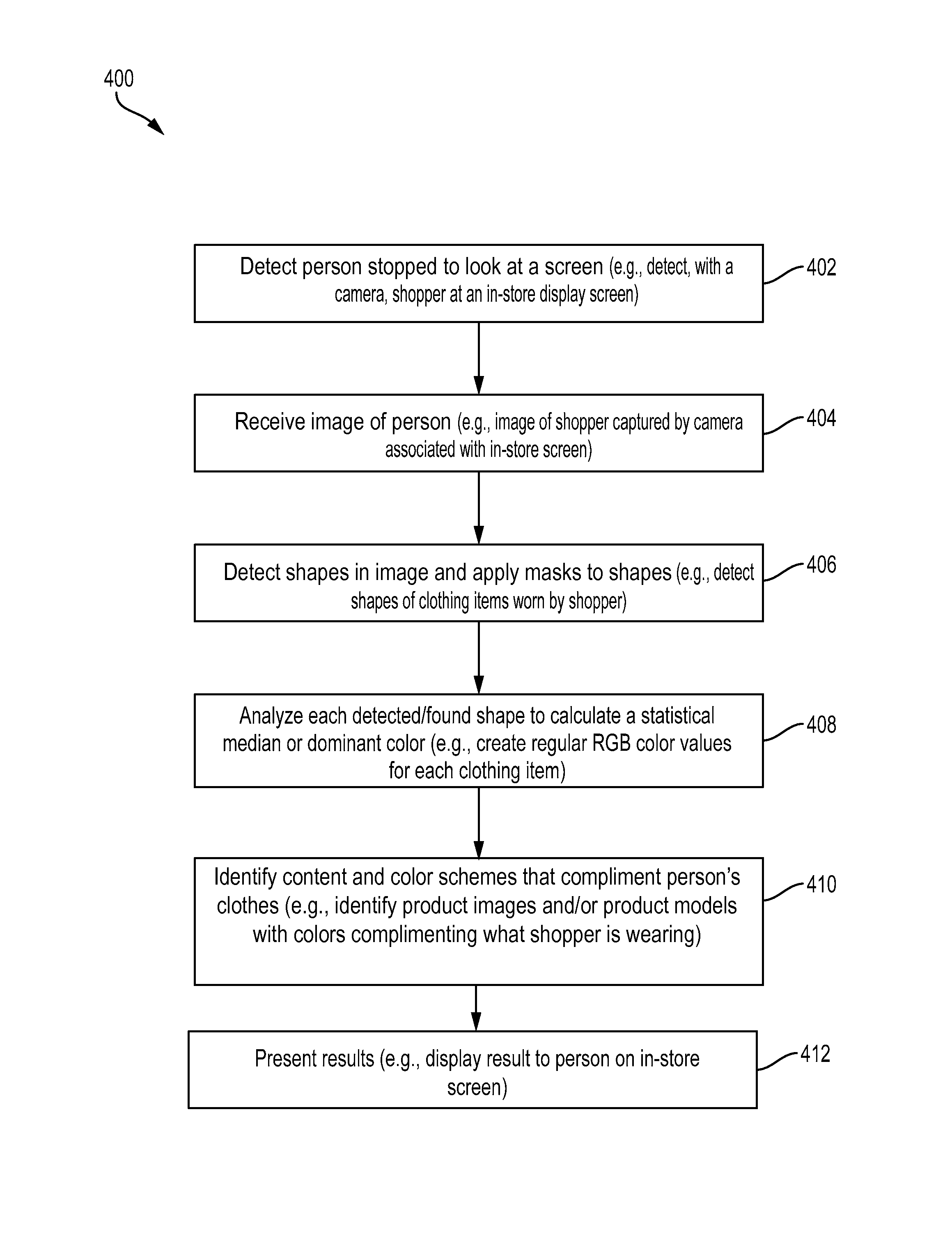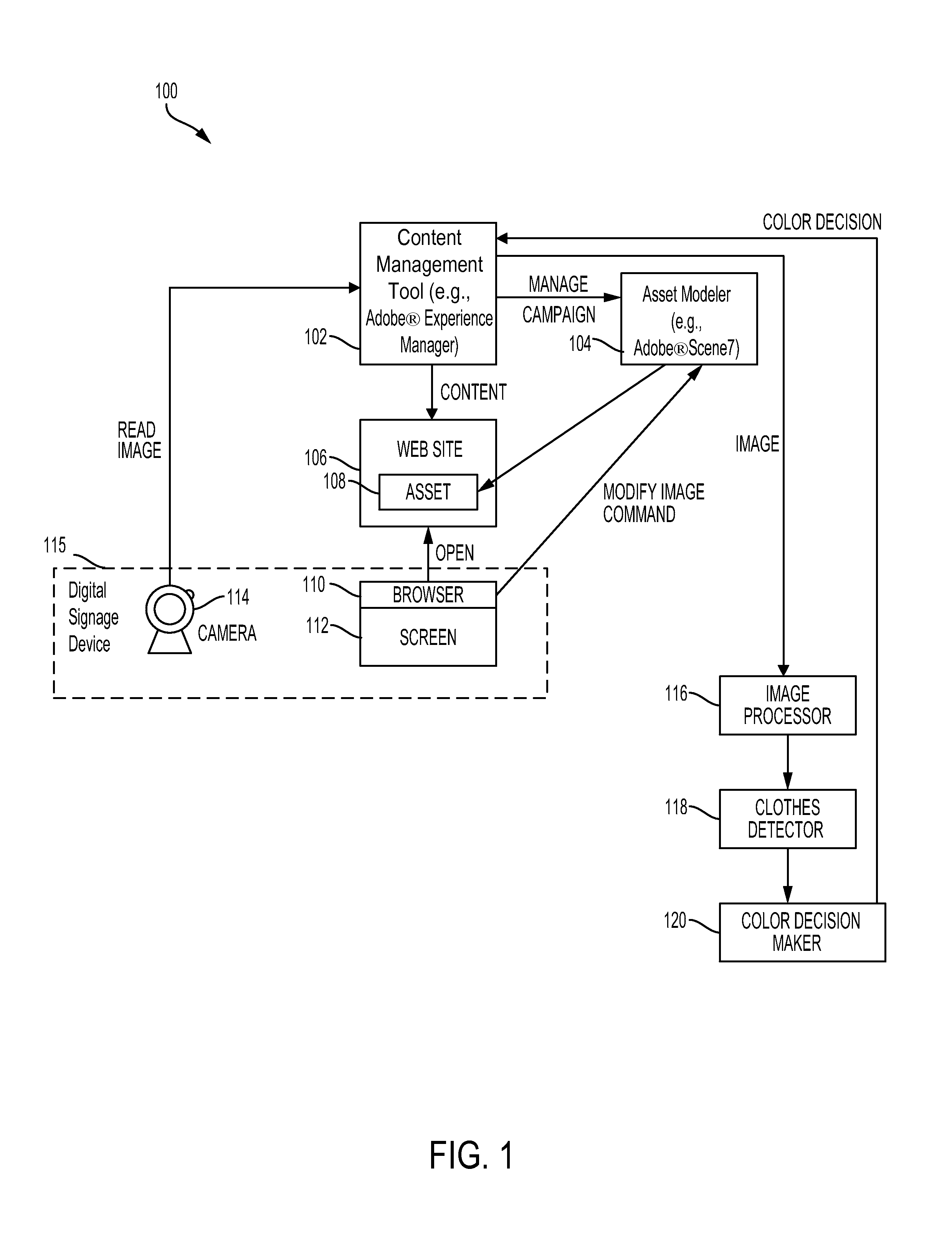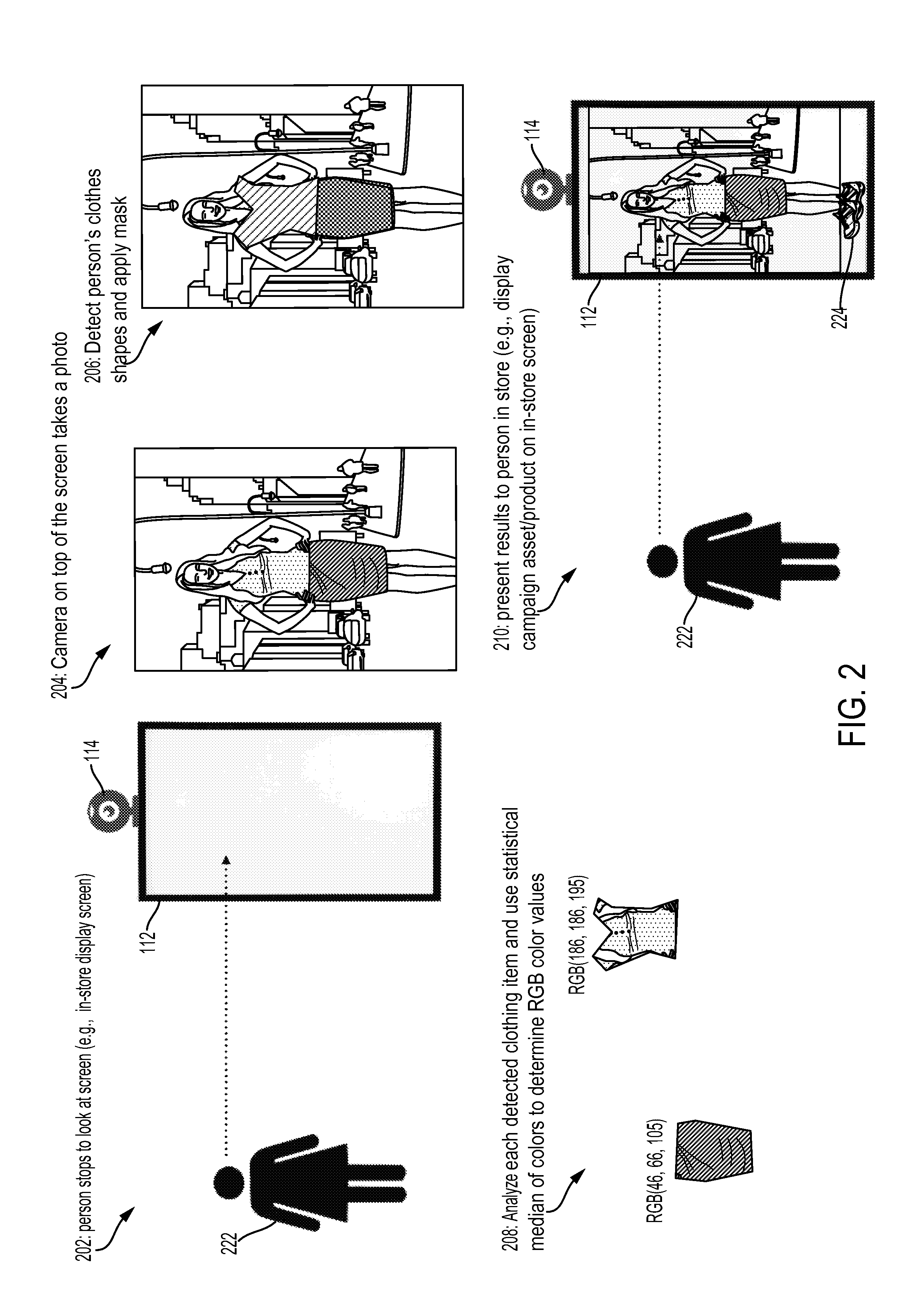Adaptive environment targeting
- Summary
- Abstract
- Description
- Claims
- Application Information
AI Technical Summary
Benefits of technology
Problems solved by technology
Method used
Image
Examples
example use cases
[0024
[0025]One example use case is as follows. A digital signage device has its own screen in a retail store. The device can be a digital signage device, a kiosk, or a wall-mounted device at a location in the store. The digital signage device is configured to display product images, offers, and other dynamic content to customers in the store. The digital signage device has input devices (e.g., camera, touchscreen display, keyboard, pointing device, or other input devices) that the customers can use to provide input to the device. The store's webpage or other content pertinent to the store is displayed on the screen. For example, if the digital signage device is in the store's shoe section, images of shoes available for purchase at the store may be displayed. The device can use the WebRTC API to access a camera (e.g., a webcam) installed near the digital signage device. For instance, a video camera mounted at the top of the digital signage device's screen can capture video frames of ...
example timeline
[0066
[0067]FIG. 3 illustrates an example timeline 300 for presenting content that is adapted to a targeted person in an environment. The timeline 300 depicted in FIG. 3 is described with reference to the embodiments of FIGS. 1 and 2. However, timeline 300 is not limited to those example embodiments. At least a portion of the steps in timeline 300 can operate within a physical environment, such as a retail store, office, show room, lobby, transportation depot, library, restaurant, park, or any other space in which a person 222 (e.g., a visitor to the environment) is in proximity to screen 112, as will be described in further detail below.
[0068]The timeline 300 begins at time 304 when an image of a person is captured. As described above with reference to FIGS. 1 and 2, the image can be captured by a camera 114 of a digital signage device 115 at time 304 when the person stops or pauses near camera 114.
[0069]After the image of the person is captured, at time, 306 shapes of apparel or cl...
PUM
 Login to View More
Login to View More Abstract
Description
Claims
Application Information
 Login to View More
Login to View More - R&D
- Intellectual Property
- Life Sciences
- Materials
- Tech Scout
- Unparalleled Data Quality
- Higher Quality Content
- 60% Fewer Hallucinations
Browse by: Latest US Patents, China's latest patents, Technical Efficacy Thesaurus, Application Domain, Technology Topic, Popular Technical Reports.
© 2025 PatSnap. All rights reserved.Legal|Privacy policy|Modern Slavery Act Transparency Statement|Sitemap|About US| Contact US: help@patsnap.com



